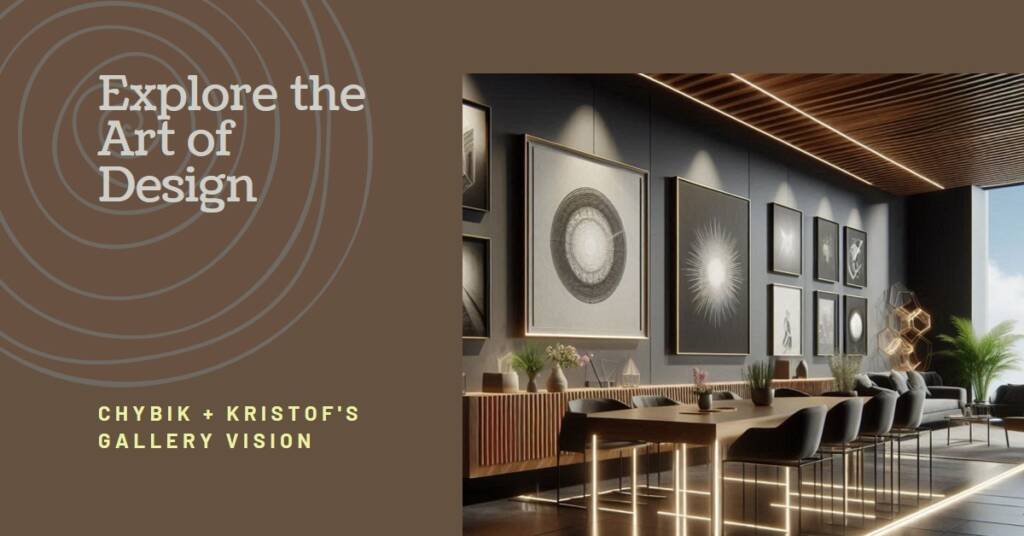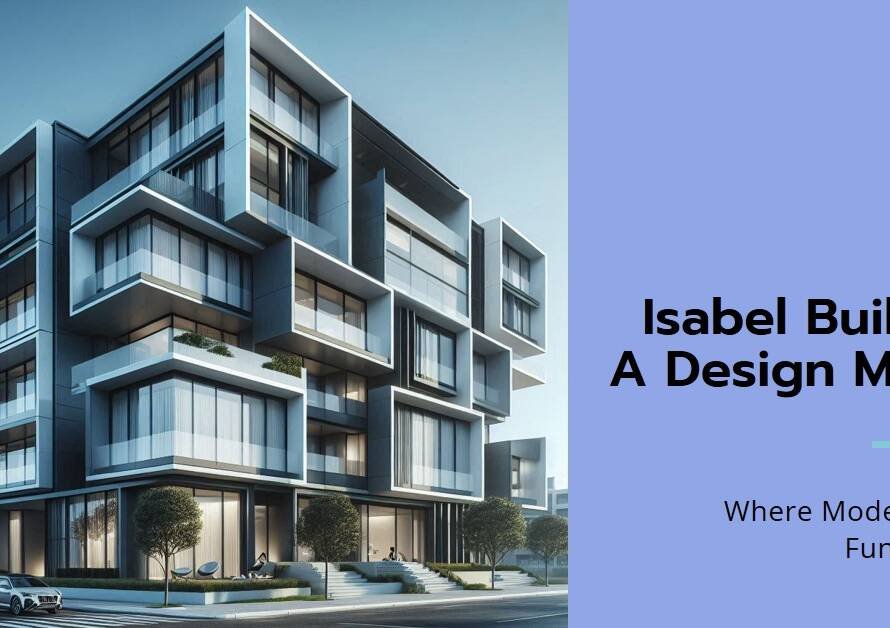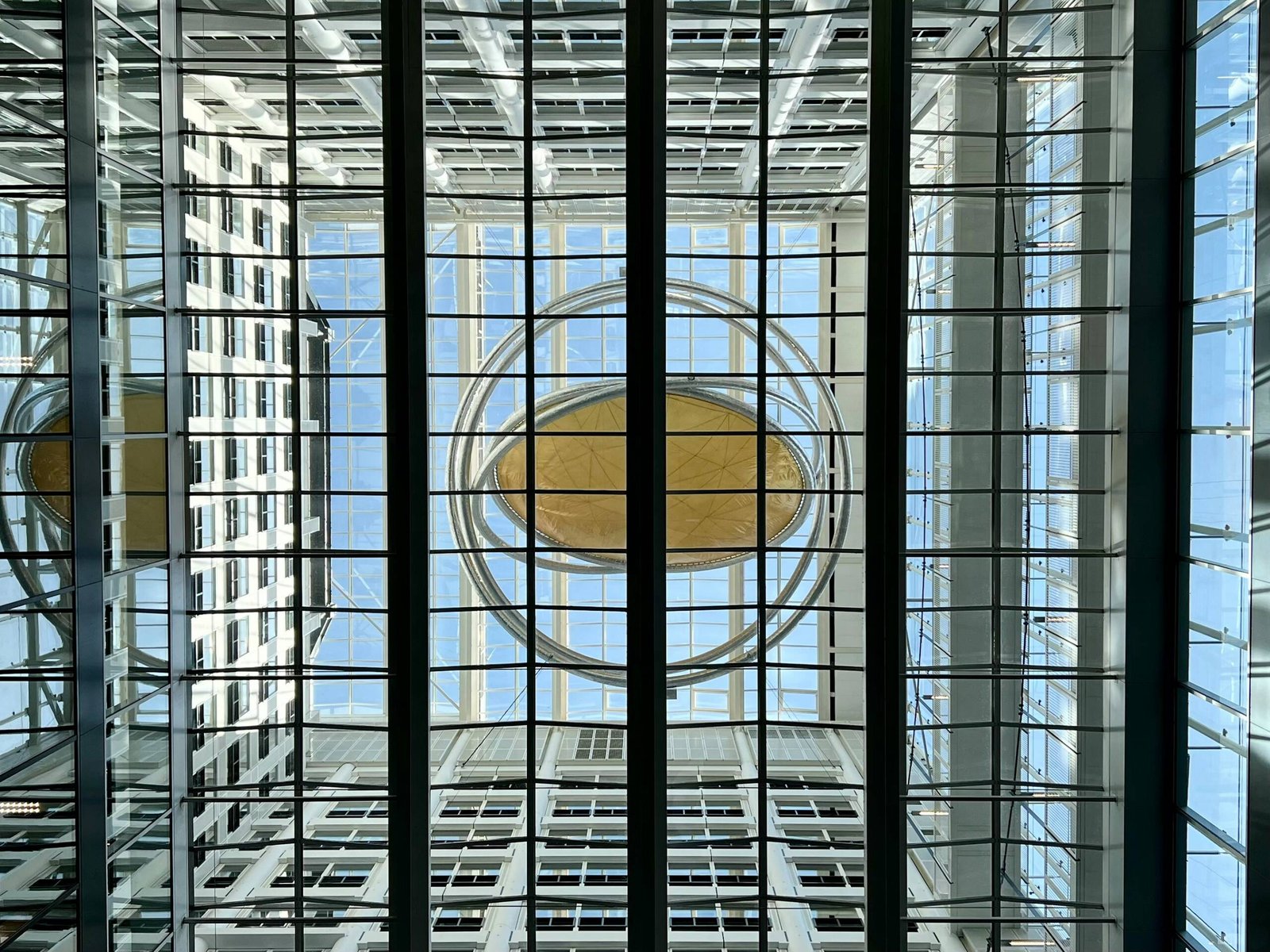
Table of Contents
- Introduction to Chybik Kristof’s Private Art Gallery
- Understanding Movable Facades in Architecture
- The Role of Copper in Building Design
- Artistic Vision: Conceptualizing the Gallery’s Design
- Innovative Features of the Movable Copper Facade
- The Impact of Environmental Considerations on Design
- User Experience: Interaction with the Movable Facade
- Challenges Faced During the Design and Construction Process
- Conclusion: The Future of Movable Facades in Art and Architecture
Introduction to Chybik Kristof’s Private Art Gallery
Chybik Kristof is an architectural firm distinguished for its innovative and context-sensitive designs, pushing the boundaries of conventional architectural thought. Established by architects Michal Chybik and Pavel Kristof, the firm has gained recognition for creating spaces that resonate with their environment and purpose. One of their notable projects is the Private Art Gallery, a contemporary structure that embodies the firm’s commitment to integrating art within architectural frameworks while responding to its surroundings.
Located in a serene and picturesque setting, the Private Art Gallery serves as a personal collection space for a local art enthusiast. The primary purpose of this gallery goes beyond mere storage of artwork; it functions as a dynamic platform for engaging with the art community. The architectural design is a defining element of this project, reflecting a balance between functionality and aesthetics. By prioritizing both the display of art and the experience of visitors, Chybik Kristof aims to cultivate a unique relationship between the artwork and its audience.
The design inspiration for the Private Art Gallery is deeply rooted in the interplay of natural elements and artistic expression. The firm drew from the surrounding landscape, integrating organic forms and materials seamlessly into the overall architecture. The use of a movable copper facade not only serves a practical purpose in enhancing the gallery’s adaptability but also symbolizes the fluidity of artistic expression. This innovative approach ensures that the gallery remains flexible, allowing for an evolving atmosphere that can adapt to different exhibitions and events.
In essence, Chybik Kristof’s Private Art Gallery exemplifies the firm’s vision of creating spaces that are not only visually compelling but also foster a deeper appreciation for art. Through thoughtful design choices, the gallery stands as a testament to the harmonious relationship between architecture and the world of art.
Understanding Movable Facades in Architecture
Movable facades represent a dynamic aspect of contemporary architecture, characterized by their ability to adapt to various environmental conditions and user needs. Unlike traditional facades, which are static and unchanging, movable facades incorporate systems that enable movement, allowing them to respond actively to factors such as sunlight, wind, and temperature. This innovative feature enhances not only the functionality of the building but also its aesthetic appeal.
One of the primary advantages of movable facades is their capacity to optimize natural light and thermal performance. Through technological advancements such as automated sensors and programmable controls, these facades can open or close in response to changes in sunlight and weather conditions. For example, panels might rotate to minimize heat gain during the summer months while maximizing light during the winter, thus contributing to energy efficiency and occupant comfort. This responsive design approach exemplifies a growing trend in architecture aimed at creating sustainable and smart buildings.
Additionally, movable facades offer unique artistic opportunities for architects. They can be designed to create varied visual appearances throughout the day and in different seasons. By utilizing materials like copper, which can develop a patina over time, architects can add layers of depth and character to the building’s exterior. The visual changes brought about by these facades enhance not only the building’s identity but also its relationship with the surrounding environment.
In summary, movable facades are at the forefront of architectural innovation, bridging the gap between functionality and aesthetics. By leveraging advanced technologies, architects can create responsive, visually captivating buildings that enhance both user experience and environmental performance. This evolution in facade design reflects the broader trends toward sustainability and user-centric design in modern architecture.
The Role of Copper in Building Design
Copper has long been revered as an essential material in architecture and building design, and its unique properties make it particularly well-suited for innovative structures such as Chybik Kristof’s private art gallery. One of the primary attributes of copper is its remarkable durability, which allows it to withstand various environmental conditions over extended periods. Unlike materials that may experience deterioration, copper can develop a protective patina, enhancing its longevity and aesthetic appeal. This distinct greenish-brown layer forms naturally over time and not only adds character but also minimizes maintenance requirements, making it an environmentally responsible choice.
Energy efficiency is another critical factor that underscores copper’s significance in building design. As a conductor of heat, copper significantly reduces energy loss, helping to maintain consistent indoor temperatures. This property is particularly beneficial in settings like art galleries where preserving a controlled environment is vital for the conservation of artworks. By employing copper in the construction, architects can create more energy-efficient buildings that align with sustainable design principles. The reflective qualities of copper also contribute to energy efficiency by helping to regulate temperatures, thus reducing reliance on artificial heating and cooling systems.
Visually, copper offers a unique aesthetic that complements contemporary architecture. The versatility of this metal allows for a range of design possibilities; it can be shaped, textured, and colored to accentuate various architectural elements. The movable copper facade of the private art gallery serves as an excellent example, where the material not only fulfills structural requirements but also acts as a focal point that stimulates curiosity and admiration. Overall, the use of copper in building design enhances the functional and visual aspects of structures, making it a favored choice for innovative designs in the modern architectural landscape.
Artistic Vision: Conceptualizing the Gallery’s Design
The conceptualization of Chybik Kristof’s private art gallery embodies a harmonious relationship between architecture and art, emphasizing innovation while respecting the presented artworks. The architects aimed to create a space that transcends the conventional gallery experience, welcoming interaction and provoking thought through its very structure. Central to this vision was the decision to incorporate a movable copper facade, which not only serves as an aesthetic element but also functions dynamically, allowing the building to engage with its environment and the art housed within.
The creative process began with an in-depth understanding of the client’s vision and the type of artwork that would be showcased. This influenced critical design choices, ensuring that the structure itself would not overshadow the art but instead enhance the viewer’s experience. It is essential that the architecture complements the artistic endeavors, and thus a collaborative approach was adopted among the architects and artists from the outset. The intent was to create an environment where the art could speak for itself while being enveloped in an innovative architectural narrative.
Furthermore, the incorporation of natural elements through the movable facade illustrates a broader commentary on the relationship between nature, art, and the built environment. By leveraging materials like copper, which patinas over time, the gallery mirrors the evolution of art and encourages viewers to contemplate the passage of time and transformation. The fluidity of the facade not only creates visually stunning shadows and reflections throughout the day but also allows for adaptable gallery spaces, affirming the architects’ goal of flexibility and integration with the artistic vision. Overall, the design encapsulates a forward-thinking approach that celebrates both art and architecture.
Innovative Features of the Movable Copper Facade
The movable copper facade of Chybik Kristof’s private art gallery is a remarkable architectural feature that exemplifies innovation and adaptability. This design not only serves aesthetic purposes but is also highly functional in responding to varying environmental conditions. The facade consists of individual copper panels that can be adjusted in angle and position, providing a dynamic exterior that interacts with light and climate throughout the day.
One of the standout attributes of this design is its ability to regulate natural light inside the gallery. By adjusting the angle of the copper panels, the amount of sunlight entering the premises can be controlled, thus minimizing glare and creating optimal lighting conditions for art display. This feature not only protects the artwork from potential damage due to UV exposure but also enhances the visual experience for visitors.
Moreover, the movable facade contributes to the building’s energy efficiency. During hot summer months, the panels can be angled to provide shade, reducing the need for air conditioning and consequently lowering energy consumption. In contrast, during the winter, they can be repositioned to allow more sunlight in, maximizing natural heating. This dual functionality showcases the synergy between beauty and practicality, making the gallery an exemplar of sustainable architecture.
Additionally, the facade’s striking appearance evolves throughout the day, as the patina of the copper changes in response to weather elements. This feature not only connects the gallery to its environment but also invites a sense of engagement from its visitors. The ability of the facade to adapt to the needs of its users further emphasizes the innovative approach taken by Chybik Kristof in architectural design, marking a significant advancement in contemporary art spaces.
The Impact of Environmental Considerations on Design
In recent years, the architectural landscape has increasingly prioritized environmental considerations, promoting a shift towards sustainable design practices. This approach is evident in Chybik Kristof’s Private Art Gallery, where the movable copper facade serves not only as a striking visual element but also as a testament to the integration of eco-friendly principles in its overall design. This innovative facade reflects the architects’ commitment to sustainability, ensuring that aesthetic appeal does not come at the expense of environmental integrity.
One of the principal features of the movable facade is its ability to adapt to changing climatic conditions, optimizing energy efficiency. By adjusting the angle and position of the copper panels throughout the day, the gallery can regulate internal temperatures, thereby reducing the dependence on artificial heating and cooling systems. This dynamic design not only enhances comfort for the occupants but significantly decreases the carbon footprint associated with energy consumption. The incorporation of such responsive elements underscores an essential aspect of eco-friendly architecture: the seamless blend of functionality and sustainability.
Additionally, the materials selected for the construction of the gallery highlight a commitment to environmental stewardship. Copper, known for its recyclability and durability, contributes to reducing waste and the need for frequent replacements. The unique weathering process of copper not only amplifies the visual character of the facade over time but also prevents corrosion, ensuring a longer lifespan for the structure. Sustainable practices, such as the re-use of materials and sourcing local resources, further amplify the project’s overall ecological benefits.
Overall, the design of Chybik Kristof’s Private Art Gallery exemplifies how environmentally conscious elements can enhance architecture. By marrying aesthetic vision with sustainable practice, the gallery sets a precedent for future designs that prioritize our planet while delivering innovative and functional spaces for art and culture.
User Experience: Interaction with the Movable Facade
The innovative design of Chybik Kristof’s private art gallery features a distinctive movable copper facade that not only marks the building’s aesthetic appeal but also significantly enhances user experience. This interaction begins even before visitors step into the gallery; the facade’s dynamic nature engages passersby, creating a sense of anticipation and curiosity about the art that lies within. As the facade shifts its position, it creates varying light conditions and reflections, inviting guests to pause and absorb the visual narrative presented by the architecture itself.
Upon entering the gallery space, visitors quickly discover that the movable facade is not merely an eye-catching element but also a functional one. Its ability to adjust according to the time of day and weather conditions transforms the interior ambiance. Natural light floods the galleries when openings are positioned to maximize sunlight, offering an environment that breathes life into the displayed artworks. The interplay of light and shadow, orchestrated by the facade’s movement, encourages viewers to experience the artwork in a new context, enhancing appreciation of both the artwork and the architectural design.
Furthermore, the incorporation of a movable facade fosters an interactive dialogue between the gallery and its visitors. As the facade shifts, it can create opportunities for spontaneous outdoor exhibitions or events, effectively blending the interior and exterior environments. This connection not only diminishes the barriers typically associated with gallery spaces but also promotes a community-oriented atmosphere. Visitors are encouraged to engage with the facade, whether by observing its mechanics or by reflecting on how its design complements artistic expression within. Overall, the adaptability of the movable facade enriches the user experience, establishing a unique relationship between the artwork and its audience.
Challenges Faced During the Design and Construction Process
The realization of Chybik Kristof’s innovative design for a private art gallery featuring a movable copper façade presented numerous challenges that required meticulous planning and execution. One of the primary technical hurdles was the integration of the kinetic element within the façade, which needed to be both functional and aesthetically pleasing. The architects required advanced engineering techniques to ensure the façade operated smoothly while maintaining the structural integrity of the building. This involved extensive simulations and prototypes to validate the design before final construction.
Environmental considerations also played a crucial role in the design and construction phases. The choice of copper as a primary material, while aesthetically striking, presented challenges related to durability and weather resistance. To address potential degradation over time, the design team collaborated with material scientists to identify suitable alloys and protective coatings that could withstand local weather conditions and the natural aging process of copper. These discussions ultimately led to innovative solutions that ensured the longevity and maintenance of the façade, preserving its visual appeal.
Logistical challenges further complicated the project, particularly concerning the assembly and installation of the movable components. Coordinating the delivery and assembly of custom-engineered parts required careful timing and synchronization among various subcontractors and suppliers. The project management team implemented rigorous scheduling and communication strategies to mitigate potential delays. Additionally, the site itself posed constraints regarding space and accessibility, necessitating creative approaches to transport materials and assemble large components without disrupting surrounding operations.
Despite these obstacles, the collaborative efforts of all parties involved ultimately resulted in a successful installation that not only met the initial design intent but also exceeded expectations in functionality and aesthetic quality. The resultant gallery stands as a testament to the innovative spirit and resilience of the design and construction teams.


Conclusion: The Future of Movable Facades in Art and Architecture
The innovative design of Chybik Kristof’s movable copper facade is not merely a bold architectural statement; it represents a shift towards dynamic and interactive building elements in both art and architecture. As cities evolve, the demand for structures that can adapt to various contexts continues to grow. Movable facades offer an exciting solution, enabling buildings to respond to changing environmental conditions, cultural needs, and aesthetic desires.
The incorporation of flexible and adaptable facades could redefine how we engage with art galleries. Such spaces, traditionally static in design, may transform into living, breathing entities that interact with their surroundings, enhance visitor experience, and promote sustainability. By allowing natural light modulation, influencing temperature regulation, and providing varying degrees of privacy and openness, movable facades like those seen in the aforementioned gallery can enhance both functionality and aesthetic appeal.
Moreover, this design approach not only serves an essential purpose but also sparks conversations about the future of architecture and urban design. As architects and designers increasingly explore the boundaries of materials and technology, movable facades may become an integral component in creating spaces that are not only visually stunning but also contextually relevant and environmentally sensitive. This evolution promises a future where architecture is a living dialogue between structure, space, and the community it serves. The potential for innovation is immense, hinting at a landscape where art galleries, and indeed all types of buildings, are more unified with their environment.
In conclusion, Chybik Kristof’s movable facade design marks a significant step towards embracing adaptability and interaction within the realm of architecture. As this trend progresses, it is evident that movable facades will play a crucial role in shaping the future interactions between art and architecture, fostering spaces that engage and inspire the public.



